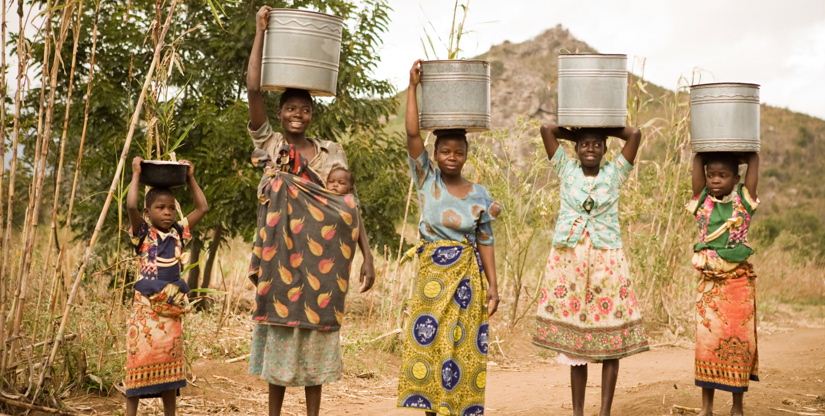
Wave after wave: the Lebanese Brain Drain
Yara Haddad, Diana Matar, Nouha Abardazzou, Malek Ben Abdallah, Bashir Choucair
Abu Mazen, a 60 year old Lebanese man spends his days searching for a job opportunity in order to be able to provide to his disabled wife, and to make use of his capabilities.
Em Mazen holds her tears everyday while talking to Mazen, who is now working abroad due to lack of stability and security in his country, and to be able to support his family.
Sarah, the sister of Mazen, is trying to find a way to tell her parents that she won’t be able to visit Lebanon these holidays, because she is still not allowed to take vacations from her work, and because she can’t afford it.
This is the story of thousands of Lebanese homes. Who from us hasn’t said goodbye to a dear family member, friend, or even colleague in the past 4 years? Why? Economic crises, political corruption, Covid-19, lack of basic needs, currency inflation, third biggest explosion in the world, loss of all their savings and homes… and yet, the resilient part of Lebanese – the one who can still afford it – is still trying survive in this country.
Emigration in Lebanon
Emigration has long been a part of Lebanon’s history. Through different emigration waves, the economic situation of the country served as the “push factor” to leave. Amid the outburst of Lebanon’s aggravating political and economic crises, it is believed that a new significant wave of emigrants has unfolded marked by an increase of 4.5 times in the number of emigrants from Lebanon, between 2020 and 2021.
Lebanon has known large waves of emigration, making out of the Lebanese diaspora one of the largest in the world and is now estimated to be larger than the country’s population itself. The emigration waves in Lebanon are usually classified in three main waves. The first emigration wave goes back to years 1970 and 1975, where the number of emigrants reached 10,000 up from 8,000 between 1960 and 1970, and 3,000 between 1945 and 1960. The second wave goes back to 1975 till 1989 during the civil war, where almost 990,000 people left the country, accounting for 40% of the total population. The third wave is more recent starting by 2019 and still ongoing.
This third ongoing wave of mass emigration is said to be the most severe and is anticipated to create a persistent drag on Lebanon’s economy and disrupts its growth, with more than 79,134 Lebanese people emigrating in 2021.
Lebanese Brain Drain
Lebanese professionals, academics and youth are choosing to leave the country for better opportunities abroad. This phenomenon is popularly known as brain drain. Brain drain has numerous and interconnected effects on both the country and its companies, which usually blurs the line between cause and effect.
Recent reports are highlighting that 20 percent of Lebanese doctors have left or are planning to leave while it is estimated that over 1,500 members of faculty and staff have either been let go or have left the American University of Beirut and its subsidiary medical center during the past two years.
To better understand the push factors aggravating the brain drain phenomenon in Lebanon, we are exploring previous studies to identify the main determinants of the decision to emigrate. The tackled studies highlight the role of aggregate economy, political stability and the environment. These studied factors are a reflection of the country’s economic environment mainly economic activity, political stability and employment levels.
Lebanon is currently witnessing a significant number of political and economic problems; we will focus mainly on government’s corruption, slow economic growth and youth unemployment rate.
1. Government’s Corruption:
Lebanon ranks 154th of 180 countries on the 2021 Corruption Perceptions Index reported by Transparency International with a score of 24 points out of 100. Over recent years, Lebanon’s score plummeted from 30 in 2012 to 24 in 2021.
2. Economic Growth:
The unfolding economic and financial crisis which has started in 2019 has been further aggravated by the dual economic effect of the COVID-19 pandemic and the massive explosion of Beirut Port in August 2020. Based on the World’s Bank data, GDP per capita dropped by 36.5% between 2019 and 2021, and Lebanon was reclassified by the World Bank as a lower-middle income country, down from upper middle-income status.
3. Youth Unemployment:
Based on the labor force survey conducted in January 2022, almost a third of Lebanon’s labor force is out of work, while the unemployment rate among the youth (15-24 years old) has reached 47.8 percent. The survey reveals that the unemployment rate increased to 29.6 percent in 2022, while the labor force participation rate is at 43.4 percent.
The trendline of Lebanese emigrants desire to leave
- Emigration by Gender and Age:
The Lebanese most willing to leave are the ones who are at an active age (25-44) followed by youth (15-25). It is observed that 42.18% of the Lebanese aged between 25-44 want to emigrate out of which 44.54% are female and 40.08% are male.
- Reasons of Emigration:
Out of the studied group, more than 88% of the surveyed people stated that the current economic situation in Lebanon is the reason why they want to leave. Another 4.46% indicated that their desire to leave is backed up by their wish to study abroad while another 2.27% claimed that they are mainly considering leaving to find better job opportunities abroad. Other reasons to emigrate is the reunion with family or getting married, but this represents a mere 0.98% of the respondents.
Starting with little to no available data on the panoply of brain drain in Lebanon, the above data validated two important points to our study. First, that indeed the people who are mostly concerned by this third wave of emigration are the youth and active population (age group: 15-25 and 25-44). Second, that the key factor pushing Lebanese to leave is the current economic situation and the pursuit of better opportunities abroad. The deterioration in the economic situation is dire and could become even worse if corrective measures and safety nets are not introduced.
A call for action
The first imperative for policy makers is to create opportunity for both its local talents and the highly skilled Lebanese who are living abroad.
A- Retain Local Talent:
- Analysis of jobs with open vacancies
The Lebanese Government can make an analysis/study to find out what are the sectors that have the highest employment need in Lebanon, and encourage high school students to enroll in related majors and attend workshops organized by the government specifically to train them for these jobs. This could be a long term solution to keep the educated people in Lebanon.
- Increased investments in public schools and universities
Public schools and universities are home for more than 53% of the Lebanese population who cannot afford to enroll in private schools and universities. However, these institutions are not well-equipped nor taken care of: professors are not well paid and therefore are always on strikes, facilities are not available, classes are not well organized… Students who graduate from these schools are already fed up with the situation, and are automatically on the look for new opportunities outside their country.
By investing in these schools and universities, the government would be giving these students better opportunities and retain them to invest later on in their country.
- Promote innovation and startup ecosystem
“It takes a village to raise a child, and it takes an ecosystem to scale an innovation.”
Government agencies should promote innovation by offering incentives and loans to entrepreneurs who would like to start their own business by creating new services or products. The rise of these new companies would lead to new employment opportunities and therefore hiring local talents in their country, in addition to an economic upswing.
- Collaboration of the Lebanese Government with Organizations like WorldBank to create projects to improve living conditions in Lebanon (provide electricity, clean water, etc…)
Lebanon has hit rock-bottom after almost 3 years of economic crises, increase in poverty, and most importantly loss of its basic needs including electricity, water, and fuel. This has been determined to be one of the main reasons of the brain drain. Therefore, the government can collaborate with organizations like World Bank to secure a budget to be able to create projects that would enable the Government to provide constant electricity to the citizens, in addition to other major needs.
B- Attract High Skilled Émigrés:
- Support networking and recruitment of the Lebanese diaspora:
Lebanon can encourage and support the networking of its diaspora through its international delegations (e.g., embassies, consulates). The government can start benefitting from its emigrants before reaching the level where it can attract their return. A network of talented and skilled Lebanese emigrants can benefit both the government and the private sector through leveraging the business connections, knowledge and expertise of the Lebanese of the world.
- Leverage Émigrés expertise to formulate government policy:
It is necessary to recognize the large and untapped scientific, innovative and creative potential of Lebanese living abroad. The government needs to foster a rapprochement with its expat community with highly qualified individuals and actively encourage the creation of projects in their home country. The expertise of Lebanese emigrants can be leveraged as a resource in formulating government policies as they can serve as advisers to government officials to build adequate measures to incentivize the return of émigrés to invest in their home country.
- Database of Émigrés:
Building up on the two first measures, the Ministry of emigrants can establish an emigrant database to serve as a track tool to allocate Lebanese talents abroad. The Ministry can collaborate with interested stakeholders to advertise for key jobs and positions that require the return of high-skilled Lebanese. The Ministry of Education can also recruit Lebanese emigrants as visiting lecturers for the country’s universities.
- Return campaigns:
Policymakers need to market the attractiveness of Lebanon as an investment market to its emigrants. This means considering specific return campaigns centered around major technology projects; mobilizing targeted human resources for earmarked projects and creating attractive and favorable conditions to attract professionals who are abroad to engage in the development of innovation in Lebanon.
- Investment Incentives:
Public institutions and the national finance and corporate sector are invited to open up to investors from the expatriate community, and to adopt, to this end, effective mechanisms to sponsor, accompany and partner with Lebanese residing abroad.
Conclusion & Recommendations:
To conclude, based on our study, we can confidently recommend an increase in the government engagement to create deals and projects to improve living conditions in Lebanon. This would make both Lebanese living in Lebanon stay and those abroad return. More efforts from the government and its partners need to be made to cushion the economic shock that would be felt in the coming years due to the ongoing emigration wave.
Another recommendation is for the government to take proper measure to monitor the ongoing mass emigration by collecting sufficient and updated data on Lebanese emigrants. The availability of accurate data would help in understanding the panoply and the seriousness of this ongoing problem. The involved stakeholders are called to take matters in hands and act accordingly to improve access to information with the objective to limit the brain drain problem and contain its future ramifications.
